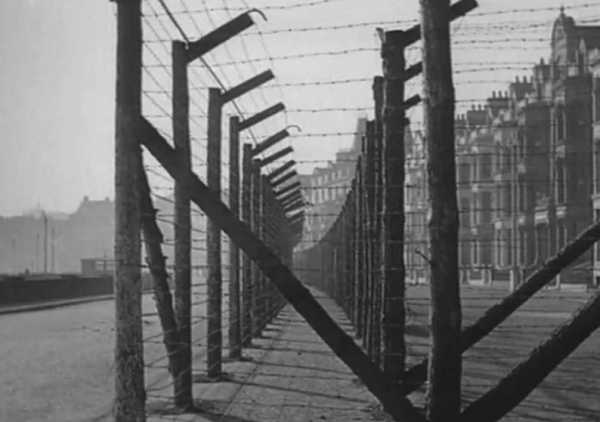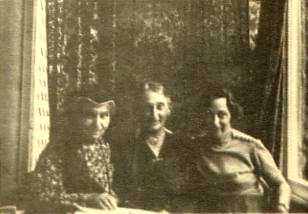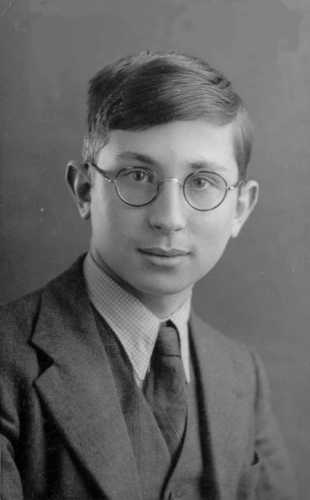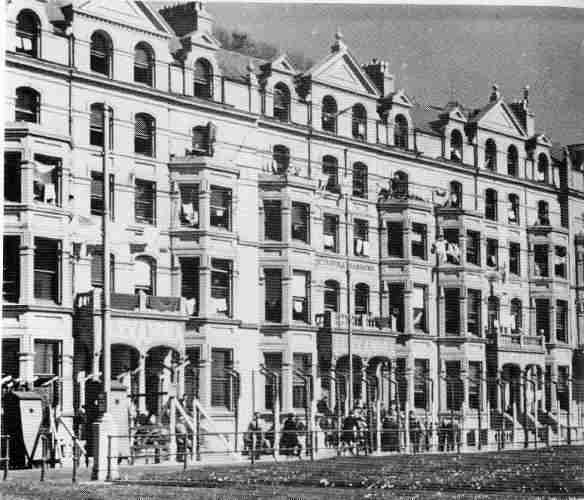Gál: Symphony No.2 in F Op.53
‘The personal experience which is always expressed in music is very deeply buried in one’s own consciousness. One doesn’t know. One never knows.’
Hans Gál
Hans Gál was born in 1890 just outside Vienna, where he studied with Richard Robert and Eusebius Mandyczewski. He rose to prominence in 1920s Germany and Austria, particularly as an operatic composer and in 1929, with the support of Richard Strauss, Gál became the director of the Conservatory in Mainz. Hitler’s ascent to power in 1933 marked a major reversal of fortune for Gál and his family. Because Gál was of Jewish descent, he was immediately dismissed from his position in Mainz, his music was banned and Gál suddenly found himself without a job or a country.

Internment camp on the Isle of Man where Gal was imprisoned in the early months of WW II
Gál’s dismissal was only the beginning of over a decade of setbacks and tragedies for the
composer. In 1988, Gal’s wife Hanna spoke of the difficulty of the years following ‘the trauma of 1933 when, with Hitler’s assumption of power in Germany, he had lost simultaneously his position as head of a highly esteemed College of Music, any possibility of having his works performed or published, had become unable to protect his children from cruel abuse by their schoolmates and even some teachers.’ Gál and his family escaped to the UK in 1938, but in 1940 he was interned as an ‘enemy alien’ and even found himself held alongside German prisoners of war, many of them Nazis. Finally, after his release, he settled in Edinburgh, and taught at Edinburgh University for many years.

Tante Jenny, Ilka and Edith, July, 1939
The early 1940s were particularly difficult for Gál. In March 1942 his mother died. The following month, his aunt and sister took their own lives to avoid deportation to Auschwitz. The strain of such upheaval and tragedy evidently became too much for Gál’s youngest son, Peter, who took his life in December 1942 at the age of only eighteen. Amid such protracted personal and professional struggle, it seems all the more remarkable that Gál had begun working on his Second Symphony, which he completed in 1943.

Peter Gal
Gál was so pessimistic about the chances of the symphony’s public performance that he initially submitted the Adagio as a stand-alone work, which Gál’s friend and champion Otto Schmidtgen premiered in Wiesbaden in October 1947. Schmidtgen gave the symphony’s first complete performance in the city a year later, and the sole UK performances took place under the baton of Gál’s former student Rudolf Schwarz with the Bournemouth Municipal Orchestra in 1950 and 1951. After that, the symphony was unheard in concert until the present performers revived it in Stratford-upon-Avon in 2012.
Prior to the first performance in Wiesbaden, Gál sent Schmidtgen an uncharacteristically long and detailed programme note:
“The Symphony is structured in four movements which, in expression and thematically, stand in an organic relationship to one another. The first movement is a calm, freely formed introduction, which presents some of the motives that are important for the further course of the work.
(The iconic chorale theme which recurs at key moments in the symphony)
(The “consolation” theme)
The following lively and energetic movement stands between this introduction and the broadly laid out Adagio which forms the heart of the Symphony; it acts as a drama ‘of the world’ [Weltspiel] between the two parts of a meditation which is turned completely inwards.
(The “passacaglia-like” episode which opens the Finale of Gal’s Second Symphony)
The actual conflict and its working out is left to the last movement, which, starting out from a passacaglia-like episode, develops into an extended sonata form and, in an ever more calming coda, spins itself again into the withdrawn mood of the introduction, turned away from the world.”
(The final recurrence of the chorale theme heralds the beginning of Gal’s “ever more calming” coda, as the symphony ends “turned away from the world.”)
Although the Second Symphony was conceived in an era of global conflict and personal tragedy, it is an intimate work of deeply touching lyricism and humour, tempered with melancholy and anxiety. It is no accident that the Adagio was the one Gál thought could be performed separately. Each of the other three movements is a constituent part of a single, interconnected symphonic structure. The first movement functions not only as an introduction, but as the exposition of the entire symphony. It begins contrapuntally and quietly, not far from the sound world of a late Beethoven quartet, with fragile individual lines gently building a web of sound.
(The opening of the Symphony)
The following Allegro energico (the symphony’s main sonata-allegro according to a unitary plan) is formally a scherzo and trio, and although it is full of humour, it is also, as Gál points out, outward-facing music, full of vitality and rhythmic energy.
(Gal called this music from the second movement a “Weltspiel” or “Drama of the World“)
The movement’s Trio section is delicate and sweet natured, vintage Gal.
(The gently nostalgic atmosphere of the Symphony’s second movement is one of Gal’s most typical soundworlds)
The true heart of the Second Symphony is the great Adagio in D flat major, which he considered calling both ‘Elegy’ and ‘Dirge’ (although he was quick to point out that it was ‘really more consolation than funeral music’).
(The opening of the Adagio, the heart of the Second Symphony)
This is music of deepest feeling, tenderness and melodic invention, full of delicate reveries and lyrical outpourings, but the gentle and childlike atmosphere in which the “consolation” theme from the first movement returns, is shattered midway through by a scream in the violins and a chorale in the brass.
(The most harrowing moment in Gal’s symphonic output? The tender consolation theme is cut short by a violent scream of despair)
The outline of the Adagio must have been in place before Peter’s suicide, and the thematic material of this movement is closely linked to the first and fourth movements, but it seems likely that the extraordinary depth of feeling throughout is at least partly traceable to that tragedy.
(The end of the Adagio from Gal’s Second Symphony, in which the consolation theme, interrupted so brutally earlier in the movement, now unfolds in seemingly endless serenity.)
The finale functions as the development and resolution of the symphony as a whole and, for all its shadows, closes not with darkness and despair but with reflection and a fragile promise of the consolation Gál seemed to be seeking throughout the Adagio. With his Second Symphony Gál composed a wartime masterpiece that contemplates peace both personal and universal.

These musical quotes are really beautiful, even more than those of his first symphony. I think it’s amazing what you’ve been doing for the music of Gál, one I had never heard of and that, as the music of some unlucky composers, really deserves more recognition (or, at least, a chance). I wonder if you’ll disclose other unknown composers in the future – yes, it would be awesome! Congratulations on your great work as a blogger, a musician and a conductor!
ps.: and yes, your Gál’s cycle will be on my shelves very soon :)